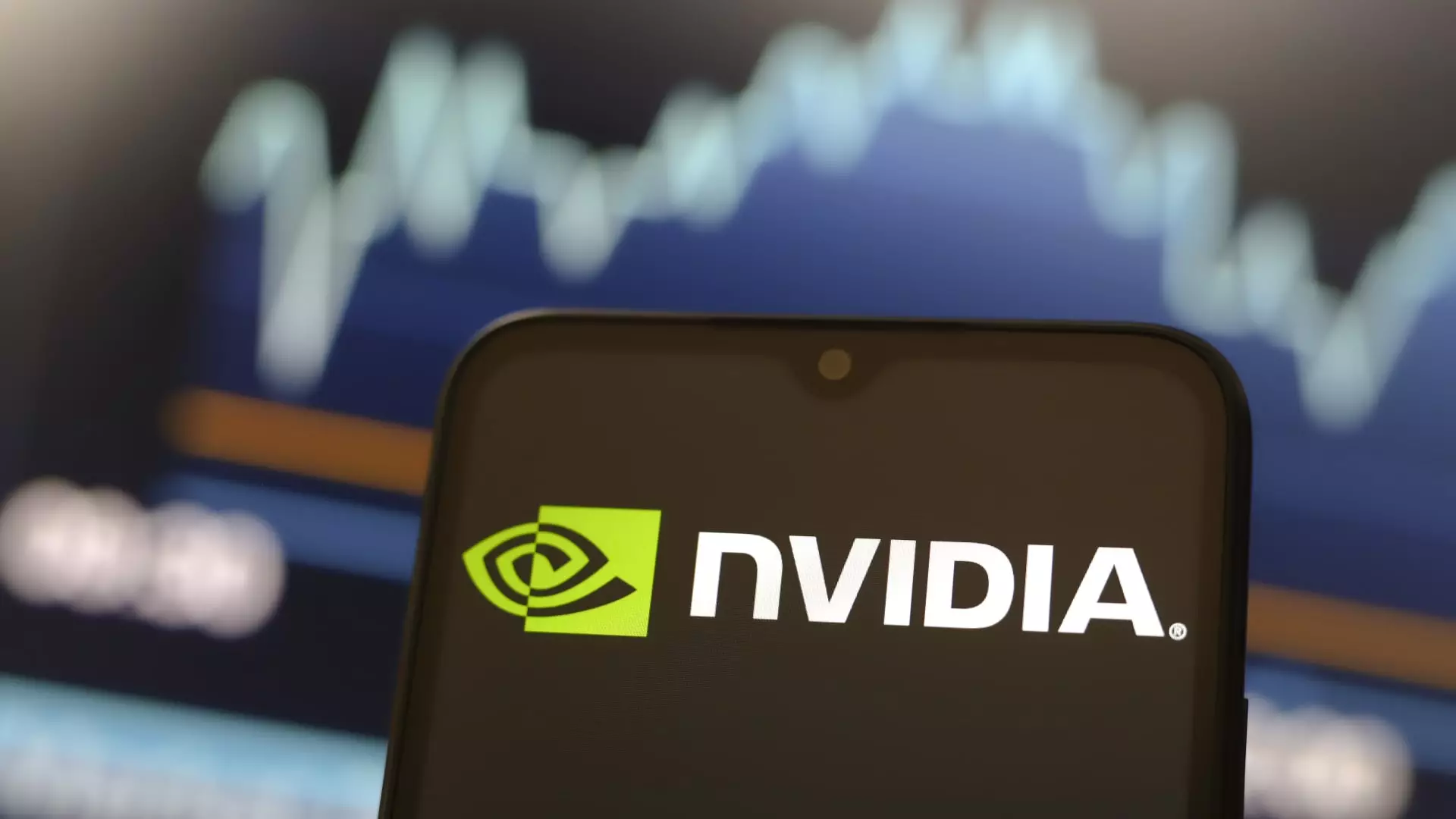As the curtain falls on another remarkable year for technology stocks, Nvidia, once heralded as a pioneer in AI chip development, has found itself in the throes of a market correction. Following an impressive rise of 166% in its stock price earlier this year, recent developments reveal potential vulnerabilities in its market positioning amidst evolving dynamics in the tech sector. Despite the Nasdaq Composite reaching new heights, Nvidia’s struggle signifies a shift that warrants closer examination.
Nvidia’s stock price displayed a notable decrease of 1.7% as markets opened on Monday, officially plunging into correction territory. A stock is typically considered to be in correction mode when it experiences a drop of 10% or more from its most recent high. In Nvidia’s case, the stock now sits roughly 11% below its peak closing price of $148.88, a record achieved just last month. The decline has become more pronounced throughout December, with shares down 4.5% for the month. This descent is indicative of broader market sentiments that suggested some profit-taking as investors adjust their portfolios after a year of notable success for Nvidia.
Shifting Dynamics: A Broader Perspective on the AI Chip Market
Although Nvidia remains a pivotal player in the AI chip domain, the market narrative is beginning to shift. As Keith Lerner, co-chief investment officer at Truist, pointed out, the need for Nvidia’s chips persists, especially for infrastructure supporting AI advancements. However, Lerner also noted a notable rotation within the sector. The emergence of other significant players has led to a diversification in investment interest, which may explain Nvidia’s recent underperformance. Investors appear to be exploring beyond Nvidia to capitalize on growth elsewhere in the technology landscape, suggesting that the competitive landscape is evolving.
The recent downturn in Nvidia’s stock can be partially attributed to profit-taking behaviors among investors following an extraordinary run. The demand for graphics processing units (GPUs), especially with the proliferation of large language models like ChatGPT, had propelled Nvidia stock to remarkable heights. Yet, as the company faces the pressures of an evolving market, concerns arise about its ability to sustain momentum in what is becoming an increasingly competitive field. The patterns observed on Wall Street could serve as a barometer for investor sentiment regarding Nvidia’s future prospects.
Broader Chip Sector Performance: A Mixed Bag
Interestingly, Nvidia’s struggles come at a time when other semiconductor stocks have been thriving. On the very same day that Nvidia’s shares slipped, competitors such as Broadcom surged to new heights, witnessing an 11% increase in its stock price. This performance, driven largely by a robust earnings report, symbolizes a shifting tide where other firms emerge as contenders in the chipmaking arena. With Broadcom reaching a market capitalization over $1 trillion, it becomes evident that momentum capitalists are now gravitating towards other stocks promising faster growth.
Despite facing challenges, it is important not to discount Nvidia’s integral role in the AI chip market. The company’s products are foundational for a multitude of technological advancements. However, analysts have identified critical price levels, particularly in the $125 to $130 range, as pivotal for assessing not just Nvidia’s stock, but the overall health of the tech market. If Nvidia cannot regain traction amidst a sea of rising competitors, it may find itself in an even tighter spot as investors continue to explore where to allocate their capital.
Nvidia’s recent stock correction sheds light on the complexities of the current market environment. While the stock’s decline is alarming for investors, it simultaneously highlights emerging opportunities within the semiconductor space. As the technology sector matures, the spotlight is increasingly shared among multiple key players, indicating that the game is far from over, and the competitive landscape will continue to evolve in unpredictable ways.

